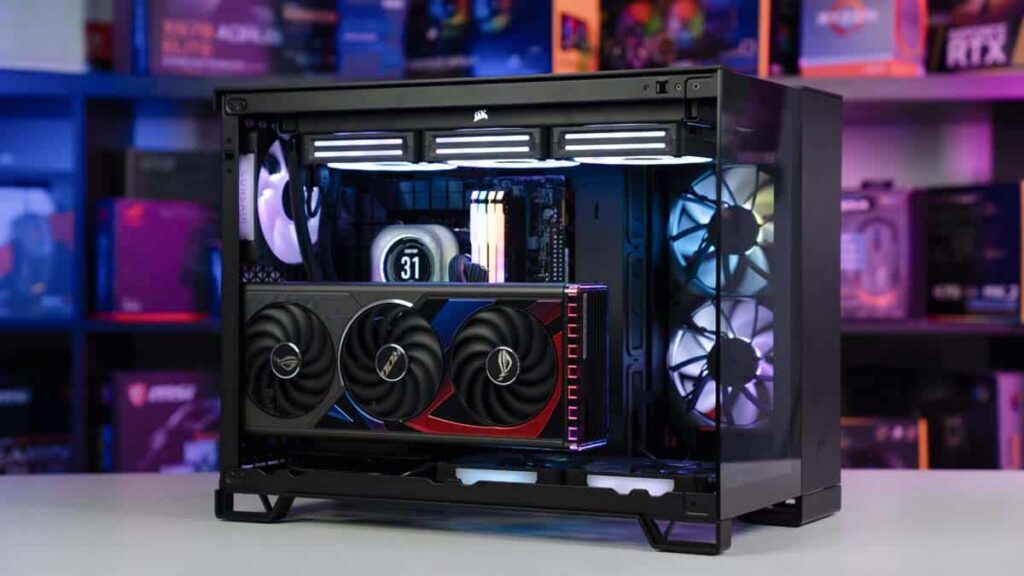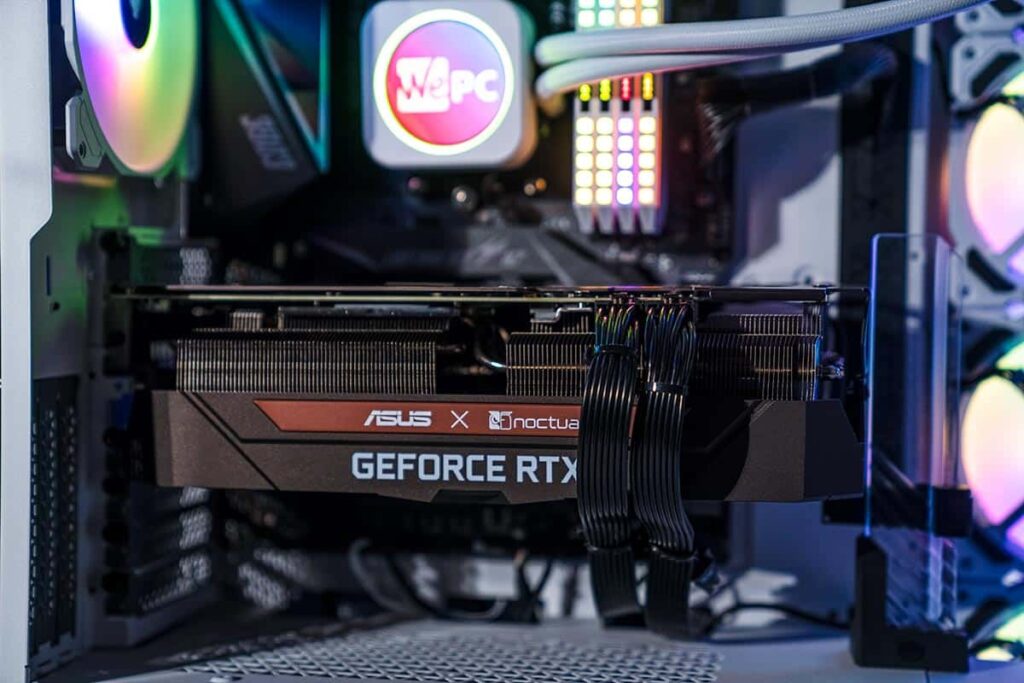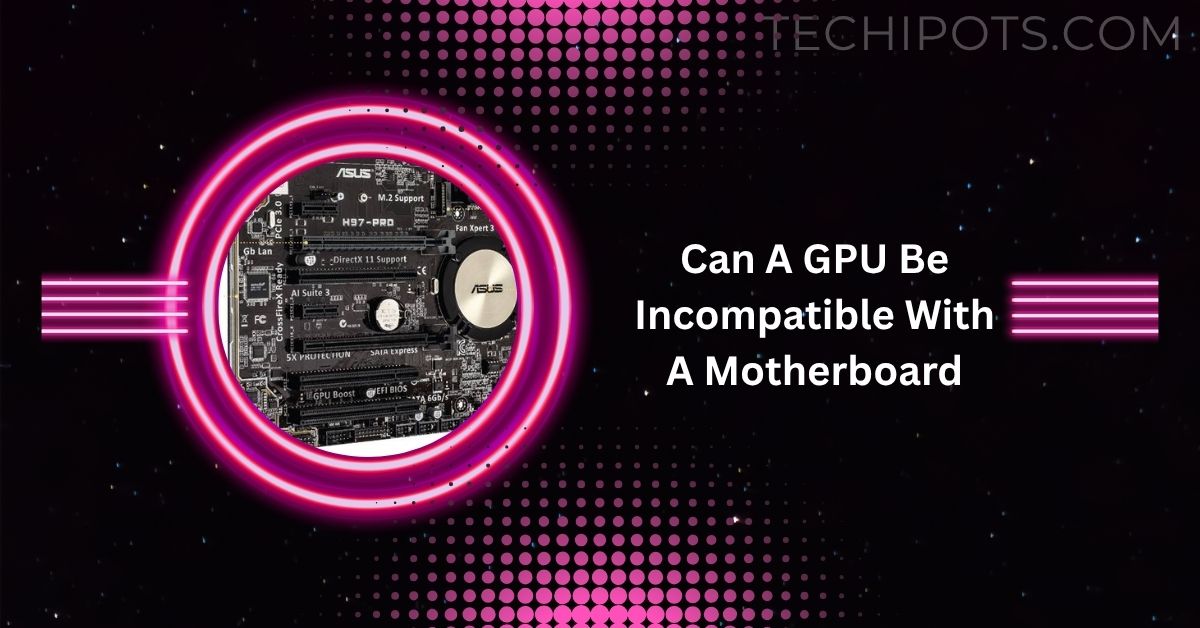When building or upgrading a PC, one of the most critical considerations is ensuring that all components work seamlessly together.
Yes, a GPU can be incompatible with a motherboard due to PCIe slot differences, power requirements, or BIOS issues, but most modern GPUs work with most motherboards, especially with PCIe x16 slots.
To help you navigate this topic, this article explores the key factors that determine GPU and motherboard compatibility, how to check for compatibility, and solutions to potential issues, drawing on insights from various reliable sources.
Understanding the Roles of GPUs and Motherboards
Before diving into compatibility issues, it’s essential to understand the roles of the GPU and motherboard in a computer system. The GPU, or graphics card, is a dedicated processor responsible for rendering images, videos, and graphical user interfaces (GUIs) on a monitor. It offloads intensive graphical computations from the CPU, making it vital for tasks like gaming, video editing, and 3D rendering. The motherboard, on the other hand, serves as the central hub that connects all hardware components, including the CPU, GPU, RAM, storage devices, and peripherals, enabling them to communicate effectively.
Compatibility between a GPU and a motherboard is crucial for optimal system performance. Incompatibility can lead to issues like system crashes, boot failures, or even hardware damage. Below, we’ll explore the primary factors that determine whether a GPU is compatible with a motherboard.
Key Factors Affecting GPU-Motherboard Compatibility

1. Physical Interface: PCIe Slot Compatibility
The primary factor determining GPU-motherboard compatibility is the physical interface, specifically the PCIe slot. Most modern GPUs connect to the motherboard via a PCIe x16 slot, which offers the highest bandwidth for graphics cards. PCIe slots come in different versions, such as PCIe 3.0, 4.0, and the emerging 5.0, each providing varying data transfer rates and bandwidth capacities.
Fortunately, PCIe is backward and forward compatible, meaning a PCIe 4.0 GPU can work in a PCIe 3.0 slot, albeit with reduced bandwidth, and a PCIe 3.0 GPU can function in a PCIe 4.0 slot without major issues. For example, an NVIDIA RTX 3080, which supports PCIe 4.0, can operate in a PCIe 3.0 slot with only slight performance differences. However, older motherboards with outdated interfaces like PCI or AGP (Accelerated Graphics Port) are incompatible with modern GPUs, which exclusively use PCIe.
To ensure compatibility, check your motherboard’s specifications for the PCIe slot version and confirm it matches or is compatible with your GPU’s requirements. Most modern motherboards feature at least one PCIe x16 slot, making them compatible with the vast majority of GPUs released in the last decade.
2. Power Supply Requirements
Another critical factor is the power supply unit (PSU) and its compatibility with both the GPU and motherboard. GPUs, especially high-end models, have significant power demands that require specific wattage and power connectors (e.g., 6-pin or 8-pin PCIe power connectors). If your PSU cannot provide sufficient wattage or lacks the necessary connectors, the GPU may not function properly, leading to system instability or failure to boot.
For instance, a high-end GPU like the NVIDIA RTX 4090 may require a PSU with 750W or more and multiple 8-pin connectors. If your motherboard is paired with an underpowered PSU, it could cause compatibility issues. To avoid this, verify that your PSU meets the GPU’s power requirements and has the correct connectors. Additionally, ensure the PSU is of high quality (e.g., 80 Plus Gold or Platinum) to provide stable power and minimize heat and noise.
3. BIOS/UEFI Support
The motherboard’s BIOS or UEFI firmware plays a significant role in GPU compatibility. Some motherboards, particularly older ones or OEM models (e.g., those from HP or Dell), may require BIOS updates to recognize newer GPUs. Without the latest BIOS version, the system may fail to boot or display video when a new GPU is installed.
For example, a user on Tom’s Hardware reported issues with an MSI GeForce RTX 2070 on an MSI B450 TOMAHAWK MAX motherboard, where the VGA LED error light indicated a compatibility issue. Suggestions included updating the BIOS or resetting CMOS settings to resolve the problem. Similarly, OEM motherboards like the Foxconn 2ABF in HP systems may have locked BIOS settings that limit GPU compatibility, requiring specific cards listed by the manufacturer.
To ensure compatibility, check the motherboard manufacturer’s website for the latest BIOS updates and confirm whether your GPU is supported. Tools like PCPartPicker can also help verify compatibility by cross-referencing your components.
4. Physical Size and Case Clearance
The physical size of the GPU is another often-overlooked factor. Modern GPUs, particularly high-end models, can be large, sometimes exceeding 300mm in length. If your PC case or motherboard lacks sufficient clearance, the GPU may not fit or could block other components, such as adjacent PCIe slots or cooling solutions.
Before purchasing a GPU, measure the available space in your PC case and compare it to the GPU’s dimensions, which are typically listed on the manufacturer’s website or product manual. Additionally, ensure proper airflow to prevent overheating, as GPUs are significant heat generators. Inadequate cooling can lead to performance issues like stuttering or crashes during gaming.
5. CPU and System Balance
While not a direct compatibility issue, pairing a GPU with a mismatched CPU can lead to performance bottlenecks. A powerful GPU paired with an outdated or low-end CPU may not perform to its full potential, as the CPU may struggle to keep up with the GPU’s demands. For example, pairing an NVIDIA RTX 4090 with an Intel Core i3 would result in significant bottlenecking, reducing overall system performance.
To avoid this, aim to balance your CPU and GPU within the same performance tier. Online bottleneck calculators can help estimate compatibility, with a bottleneck of less than 5% indicating a good match. Additionally, check if your motherboard supports features like Resizable BAR or Above 4G Decoding, which can enhance GPU performance by allowing the CPU to access more VRAM.
Common Compatibility Issues and Solutions

1. System Fails to Boot or No Display
If your system fails to boot or displays no video after installing a new GPU, the issue could stem from an incompatible PCIe slot, outdated BIOS, or insufficient power supply. To troubleshoot:
- Verify PCIe Slot: Ensure the GPU is properly seated in a PCIe x16 slot. Try a different slot if available.
- Update BIOS: Download and install the latest BIOS update from the motherboard manufacturer’s website.
- Check PSU: Confirm the PSU provides enough wattage and has the correct power connectors for the GPU.
- Test GPU: Test the GPU in another system to rule out a defective card.
2. OEM Motherboard Limitations
OEM motherboards, such as those in pre-built systems from HP or Dell, may have restricted BIOS settings or compatibility lists that limit GPU options. For example, a user with an HP Pavilion p6-2220t reported issues with an MSI GTX 750Ti due to BIOS restrictions, despite the GPU booting initially. In such cases, consult the manufacturer’s compatibility list or consider upgrading to a non-OEM motherboard for greater flexibility.
3. Older GPUs on Newer Motherboards
Older GPUs using PCI or AGP interfaces are generally incompatible with modern motherboards, which exclusively use PCIe. However, PCIe-based GPUs from the last 10–15 years are typically compatible with newer motherboards, provided drivers are available for the operating system.
How to Check GPU-Motherboard Compatibility
To ensure a GPU is compatible with your motherboard, follow these steps:
- Check PCIe Slot: Confirm your motherboard has a PCIe x16 slot and note its version (e.g., 3.0 or 4.0). Cross-reference this with the GPU’s requirements.
- Verify Power Supply: Ensure your PSU meets the GPU’s wattage and connector requirements.
- Update BIOS: Check for BIOS updates on the motherboard manufacturer’s website to ensure support for newer GPUs.
- Measure Physical Space: Compare the GPU’s dimensions with your PC case and motherboard layout to ensure a proper fit.
- Use Compatibility Tools: Leverage online tools like PCPartPicker or 9meters to check for compatibility issues.
- Consult Manufacturer Specs: Review the GPU and motherboard manuals or websites for detailed compatibility information.
FAQs
Can a graphics card be incompatible with a motherboard?
Yes, a graphics card can be incompatible due to different PCIe slots, power needs, or old BIOS. Most modern cards work with most motherboards, though.
Do motherboard and GPU have to match?
They don’t have to match exactly. Most GPUs fit modern motherboards with PCIe slots, but check power, slot type, and BIOS for full compatibility.
Can a motherboard affect GPU?
Yes, a motherboard can affect a GPU if it has an old PCIe slot, weak power support, or outdated BIOS, limiting performance or compatibility.
Do I need to upgrade my motherboard for a new GPU?
Usually, no. Most modern motherboards support new GPUs with PCIe slots, but you might need a BIOS update or better power supply for compatibility.
Will my CPU bottleneck my GPU?
If your CPU is old or weak, it might bottleneck a powerful GPU, slowing performance. Check CPU-GPU balance to ensure they work well together.
Are graphics cards universal to motherboards?
Most graphics cards work with modern motherboards using PCIe slots, but older boards or mismatched power/BIOS can cause issues. Always check compatibility first.
Do I need to update my BIOS for a new GPU?
You might need a BIOS update for a new GPU, especially on older motherboards, to ensure it’s recognized and works properly without issues.
Conclusion
While a GPU can be incompatible with a motherboard due to differences in PCIe slot versions, power requirements, BIOS support, or physical size, modern hardware standards like PCIe have made compatibility issues rare for systems built within the last decade. By carefully checking your motherboard’s specifications, updating BIOS, ensuring adequate power supply, and verifying physical fit, you can avoid compatibility problems and build a stable, high-performing PC. Always consult manufacturer documentation and use tools like PCPartPicker to confirm compatibility before purchasing. With these precautions, you can confidently upgrade your GPU and enhance your system’s performance without encountering costly mistakes.
